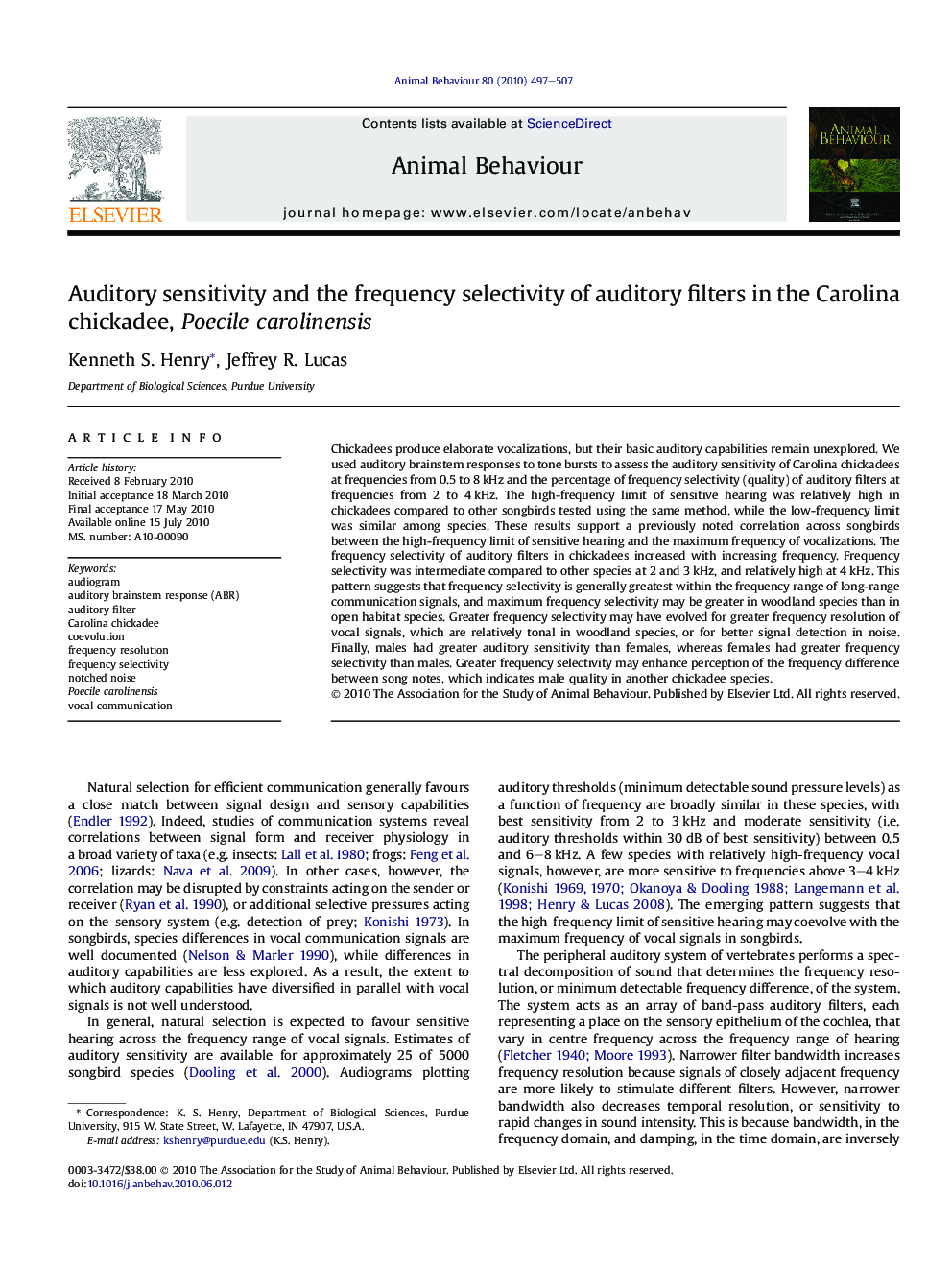| Article ID | Journal | Published Year | Pages | File Type |
|---|---|---|---|---|
| 2417207 | Animal Behaviour | 2010 | 11 Pages |
Chickadees produce elaborate vocalizations, but their basic auditory capabilities remain unexplored. We used auditory brainstem responses to tone bursts to assess the auditory sensitivity of Carolina chickadees at frequencies from 0.5 to 8 kHz and the percentage of frequency selectivity (quality) of auditory filters at frequencies from 2 to 4 kHz. The high-frequency limit of sensitive hearing was relatively high in chickadees compared to other songbirds tested using the same method, while the low-frequency limit was similar among species. These results support a previously noted correlation across songbirds between the high-frequency limit of sensitive hearing and the maximum frequency of vocalizations. The frequency selectivity of auditory filters in chickadees increased with increasing frequency. Frequency selectivity was intermediate compared to other species at 2 and 3 kHz, and relatively high at 4 kHz. This pattern suggests that frequency selectivity is generally greatest within the frequency range of long-range communication signals, and maximum frequency selectivity may be greater in woodland species than in open habitat species. Greater frequency selectivity may have evolved for greater frequency resolution of vocal signals, which are relatively tonal in woodland species, or for better signal detection in noise. Finally, males had greater auditory sensitivity than females, whereas females had greater frequency selectivity than males. Greater frequency selectivity may enhance perception of the frequency difference between song notes, which indicates male quality in another chickadee species.
